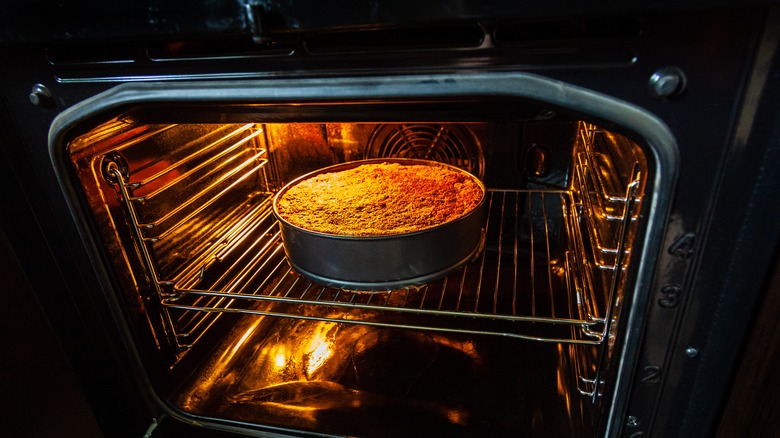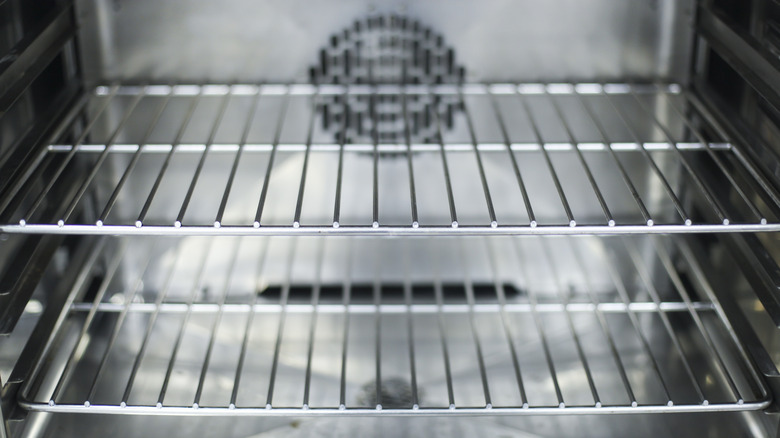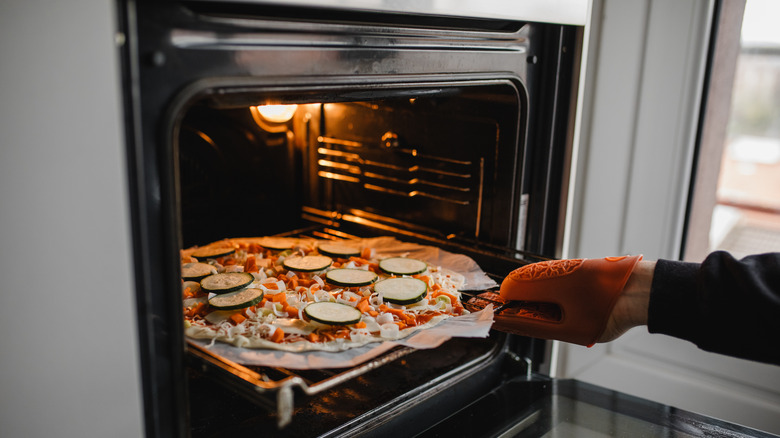Cook Smarter: When To Use The Top, Middle, And Bottom Racks In Your Oven
The oven is a kitchen workhorse that helps cooks create delicious culinary masterpieces — from hearty breakfast bakes to cozy dinner roasts and everything in between. Using this appliance isn't too complex; however, one seemingly small detail contributing to consistently great oven cooking is mastering the art and science of positioning food in the oven cavity. Knowing when to use the top, middle, and bottom racks in your oven helps ensure cooking time is optimized, you maximize the full potential of the appliance, and meals are cooked perfectly every single time.
The top rack, for example, is the hottest spot in the oven and receives heat from above. Therefore, it's the ideal location for foods requiring a browned or crispy top coat. On the flip side, the third rack is closest to the heating element at the bottom of the oven, so use it when you want to develop a crunchy bottom crust on a dish. And lastly, there's the middle rack. This is the most used rack in the oven since it provides an even cooking environment ideal for preparing most dishes.
Luckily, you don't have to memorize the foods best suited for each rack position. Just understand how the oven functions and you'll be able to properly decide what goes where, even when cooking a dish for the first time.
What determines the ideal oven rack location for a dish
The biggest factor determining oven rack positioning is the oven's heat source and the racks' proximity to the heat source. Most ovens have two heating elements: one at the top and the other at the bottom. When you preheat the oven, both of these elements produce heat to raise the internal temperature.
Now, since hot air rises, the top region of the appliance is generally always hotter than the rest of the cavity. Additionally, as the heat rises, it bounces off the top ceiling and is reflected downwards. That's why when deciding which food goes in this section, go with ones that need extra heat on top to either crisp a crust, melt cheese toppings, or simply brown a top coat. Think flavorful garlic bread or gratins.
On the other hand, you should only place a dish on the lowest rack if you want it to form a crispy bottom crust, since it receives direct heat from below. Pizzas or pies are perfect here. For the middle rack, the fact that it's halfway between the top and bottom heat sources explains why it's ideal for even cooking. Food placed here will cook uniformly on all sides. Since that's generally the cooking environment most dishes require, it explains why it's the most commonly used rack, especially for desserts such as cakes, brownies, and cookies.
Don't just stick to one oven rack position
Achieving a perfect bake or roast in the oven doesn't always mean keeping your dish in one rack position from the start to the end of the cooking session. Depending on how the finished dish should look and taste, you may have to move it from one rack location to another partway through. However, this isn't just a random rotation; instead, think of it as a very intentional shift with an end goal in mind.
For example, when baking frozen pizza, you want to start with it on the bottom rack to ensure its crust forms a nice crispy crunch, then move it to the uppermost rack so the top can brown beautifully as the cheese melts. Another good candidate for rack repositioning is bread. After placing it on the middle rack to cook through, if you want an extra crunchy crust, move the loaf to the top shelf for the last few minutes of baking.
Another instance where cooks may need to move food from one rack level to another is when baking several items at once. For instance, if you have more than one tray of cookies each placed on a different rack level, rotate the racks during the bake so they can all get equal heat exposure and cook evenly.


